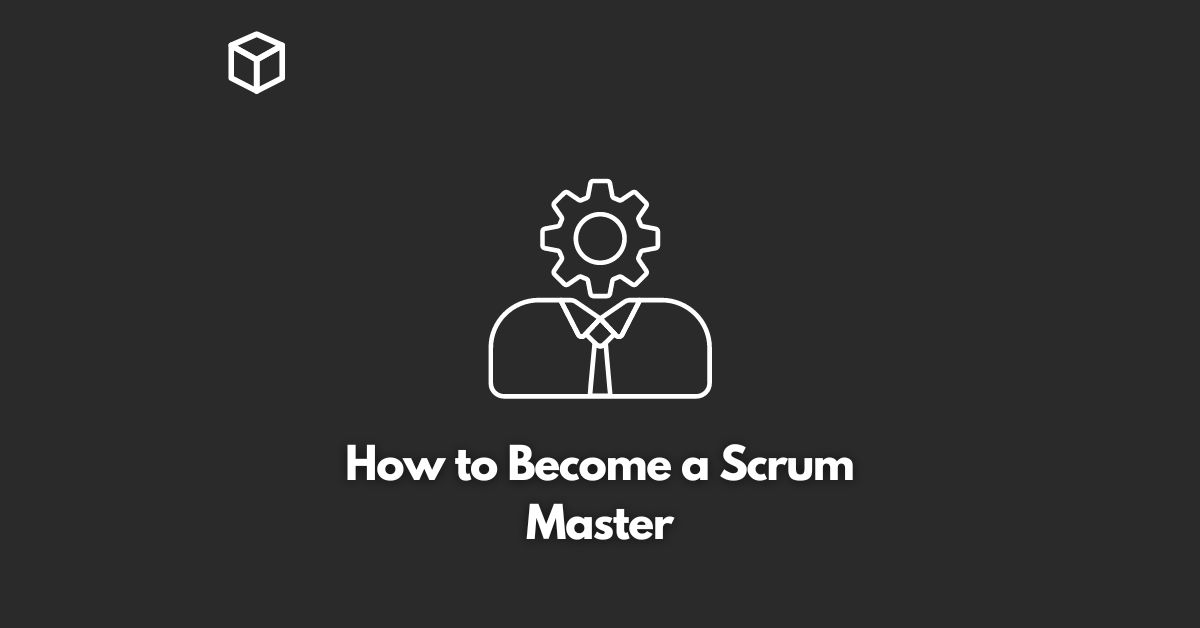The Agile project management methodology and specifically, the Scrum framework have become the cornerstone of efficient project delivery in many industries.
Among the essential roles in this process is the Scrum Master. This individual plays a vital role in facilitating daily meetings, improving team interactions, and maximizing productivity by removing roadblocks.
In this detailed guide, we will walk you through the steps to become a Scrum Master.
Understanding the Role of a Scrum Master
A Scrum Master oversees a team using the Scrum framework, often in a technology or software development context.
The Scrum framework falls under the Agile project management methodology, which emphasizes flexibility, teamwork, and continuous improvement.
Scrum Masters encourage and motivate Agile teams during production, acting as both coaches and administrators.
They ensure that the team adheres to Scrum principles and values, such as courage, focus, commitment, openness, and respect.
Their roles encompass various duties, including facilitating daily Scrum meetings, mentoring team members on Agile principles, leading cross-team communication, and ensuring the team achieves its objectives on time.
The Path to Becoming a Scrum Master
Here are the seven key steps to becoming a Scrum Master, even with no prior experience in the role.
Step 1: Familiarize Yourself with the Basics of Scrum
The journey to becoming a Scrum Master begins with understanding the fundamentals of Agile and the Scrum framework.
Familiarizing yourself with Scrum’s values, principles, and practices will give you a firm grounding.
There are various resources available, such as the Agile Manifesto and eLearning series by the Scrum Alliance.
Step 2: Decide on Your Scrum Certification
One of the best ways to enter the Scrum Master field is by obtaining a recognized certification.
The certification process will allow you to delve deeper into Agile, Scrum, and the roles and responsibilities of a Scrum Master.
There are several options for Scrum Master certification. They include the Professional Scrum Master™ I (PSM I) through Scrum.org, Certified ScrumMaster® (CSM) through ScrumAlliance, and Scrum Master by Scrum Inc.™. You should choose one that aligns with your career goals.
Step 3: Enroll in a Scrum Course
After choosing the certification that suits you best, the next step is to enroll in a recognized Scrum course.
This course will equip you with the knowledge and skills necessary to fulfill the Scrum Master role.
Each certification pathway has its unique specifications. For instance, if you opt for the PSM I certification, Scrum.org mandates that you take its Professional Scrum Master course.
Step 4: Register for the Exam
Having completed the required hours of study and the Scrum course, you’re ready to register for the certification exam.
Some certification organizations offer a second attempt for free if you undertake the exam within a specific period after completing the course.
Step 5: Study for the Exam
Even after completing the course, it’s crucial to continue studying and preparing for your exam.
The test typically focuses on key Scrum principles and practices, including project management, team building, sprints, release planning, progress reporting, and scalability.
Moreover, some exams may include questions about the history, evolution, and philosophy of the Scrum framework.
Step 6: Take and Pass the Exam
The format and passing score for the certification exam may vary depending on the certification body.
Generally, it’s a multiple-choice test, and you should know your results within minutes of completing it.
After passing, you’ll receive your Scrum Master certification and officially join the ranks of Scrum Masters.
Step 7: Renew Your Certifications Every Two Years
Scrum Master certifications typically expire every two years.
To remain a recognized Scrum Master, you’ll need to renew your certification, which may require you to demonstrate continuing education hours.
Other Ways to Prepare for Your First Scrum Master Role
If you’re interested in becoming a Scrum Master with no direct experience in the role, the following steps can help you prepare:
Practice the Scrum Framework in Other Roles
You can gain valuable experience by applying the Scrum framework principles in your current role or personal projects.
This could be an efficient way to internalize Scrum concepts and demonstrate your practical knowledge when applying for Scrum Master roles.
Build Your Professional Network
Networking can open up opportunities and give you insights into the field. Consider attending Agile conferences, joining local Agile groups, or participating in online forums and communities.
Develop Relevant Skills
In addition to mastering the Scrum and Agile principles, as a Scrum Master, you will also need strong communication, collaboration, and team-building skills. You might already possess these skills from previous roles or personal experiences.
Explore Certification Options
A Scrum certification not only validates your knowledge and expertise but also significantly improves your chances of landing a Scrum Master role.
The Certified Scrum Master (CSM) certification through Scrum Alliance is one popular option.
Highlight Transferable Skills
If you’re transitioning into a Scrum Master role, it’s essential to highlight transferable skills from your previous roles, such as communication, conflict resolution, and organizational skills.
Make sure these are clearly outlined in your resume and linked directly to the requirements of a Scrum Master role.
Prepare for Your Job Search
Once you feel ready to apply for Scrum Master positions, make sure you customize your resume for each application.
Preparation is key for successful interviews, so review potential interview questions and practice your answers.
The Necessary Skillset of a Scrum Master
A Scrum Master must possess a combination of soft and technical skills, including excellent communication and interpersonal skills, proficiency in coaching and conflict resolution, and in-depth knowledge of Scrum and Agile principles.
By honing these skills and following the steps outlined in this guide, you’re well on your way to becoming a successful Scrum Master.
I hope this article will help you a lot in achieving your goal of become a successful scrum master.
Related Article: What is a Scrum Master




